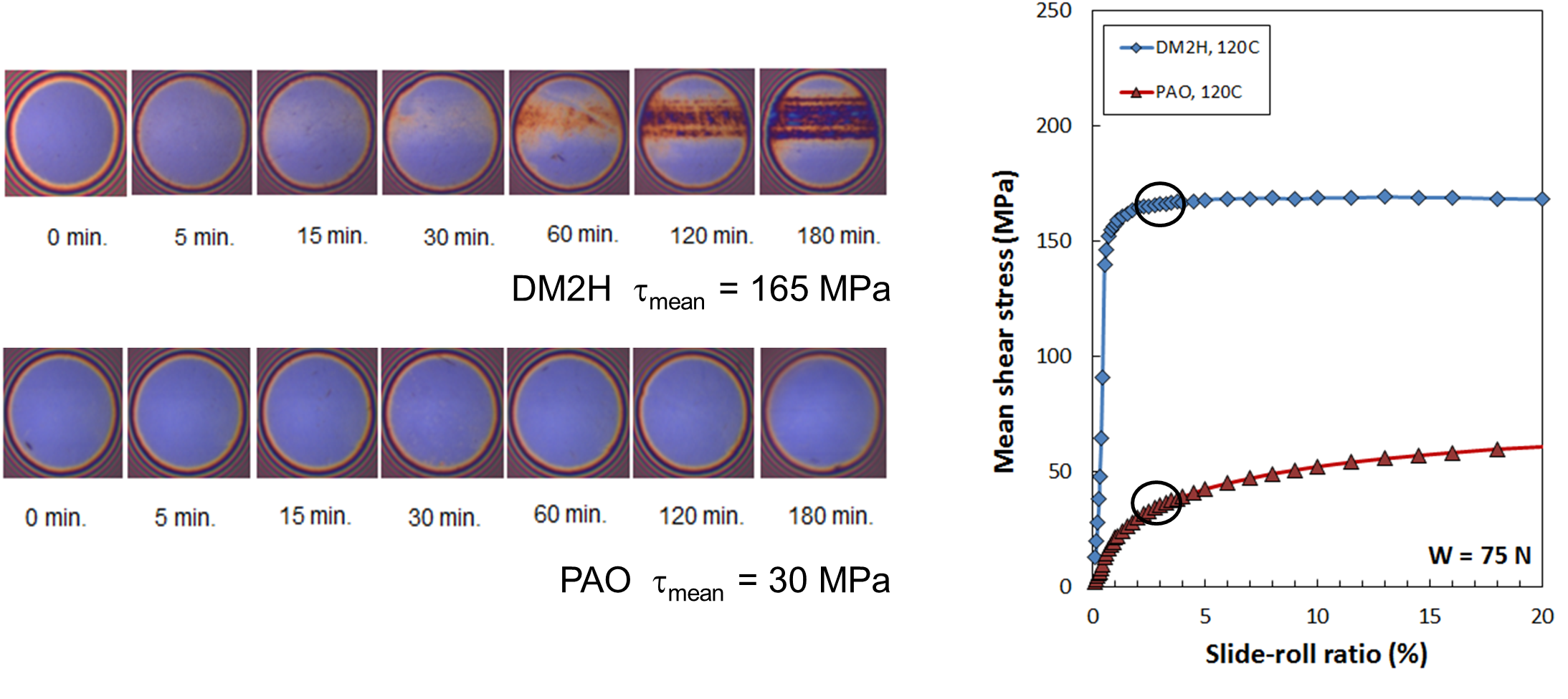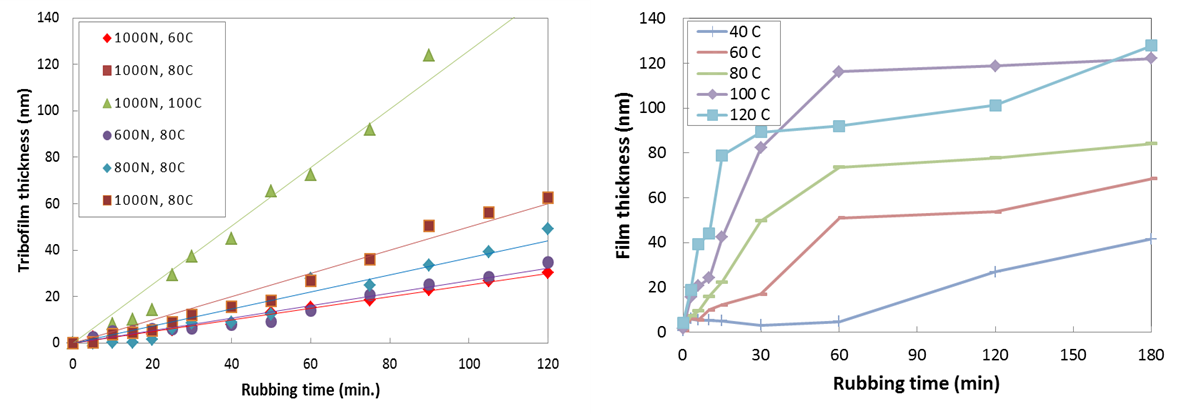INTRODUCTION: Zinc dialkyl and diaryldithiophosphates (ZDDPs) are the most widely used antiwear additives employed in lubricants and are currently present in almost all crankcase engine oils. They protect rubbing surfaces by forming thick tribofilm. Recent research by the authors has proven that this ZDDP film formation is due to mechanochemistry, in which the authors have shown that ZDDP can even form tribofilm in thick film conditions so long as the shear stress is sufficiently high [1].
This work describes new research on ZDDP tribofilm formation in both thick film, high pressure and thin film conditions. The results confirm that under both conditions the film formation of ZDDP follows the mechanochemical process.
METHODS: A minitraction machine with spacer layer imaging (MTM-SLIM) is employed to monitor the rate of film formation in rolling-sliding contacts. One type of tests was carried out under high speed, high pressure but low slide-to-roll ratio (SRR) conditions. This is to achieve ZDDP film formation under Elastohydrodynamic (EHD) condition without significant temperature increase in the contact. This has enabled ZDDP film formation to be studied in EHD condition on steel surface for the first time. Another type of tests was carried out under low speed, low load but high SRR, boundary conditions. Under certain conditions the asperity pressures and the shear stresses are high in the contact, which also drives the formation of ZDDP tribofilm.
RESULTS: Figure 1 shows the ZDDP film formation behaviour in two different base oils – a high traction oil DM2H and a polyalphaolefin (PAO) oil, under the same high speed, high press but low SRR conditions. The tribofilm only formed for the ZDDP in DM2H.

Figure 1 – SLIM images of ZDDP film build up in DM2H and PAO. WC on WC, U=3.5 m/s, SRR=3%, W=75N, 120°C

Figure 2 – Growth of ZDDP tribofilm with rubbing time under EHD and boundary conditions, steel on steel A) U=3.5 m/s, SRR=1%, B) U=0.5 m/s, SRR=50%, W=31N.
Figure 2 A) shows the dependence of ZDDP tribofilm growth on temperature and load for ZDDP in DM2H under EHD condition; while Figure 2 B) shows the dependence of ZDDP tribofilm growth on temperature for ZDDP in GTL4 under boundary condition.